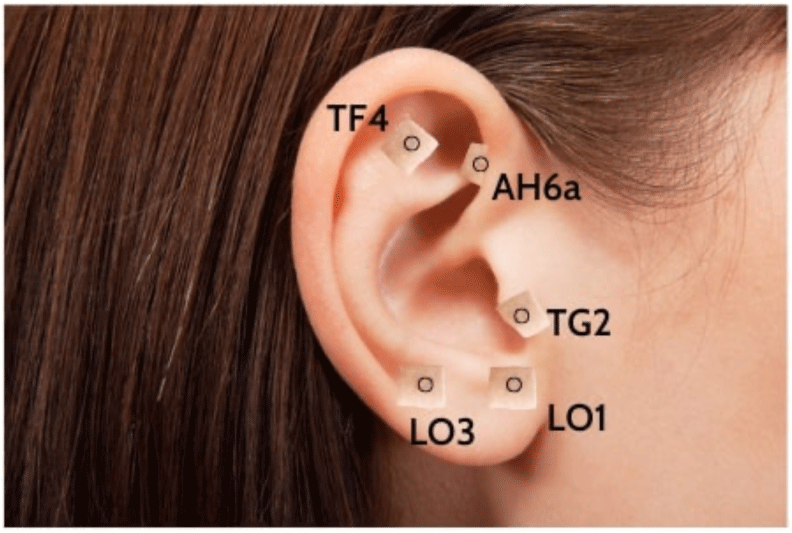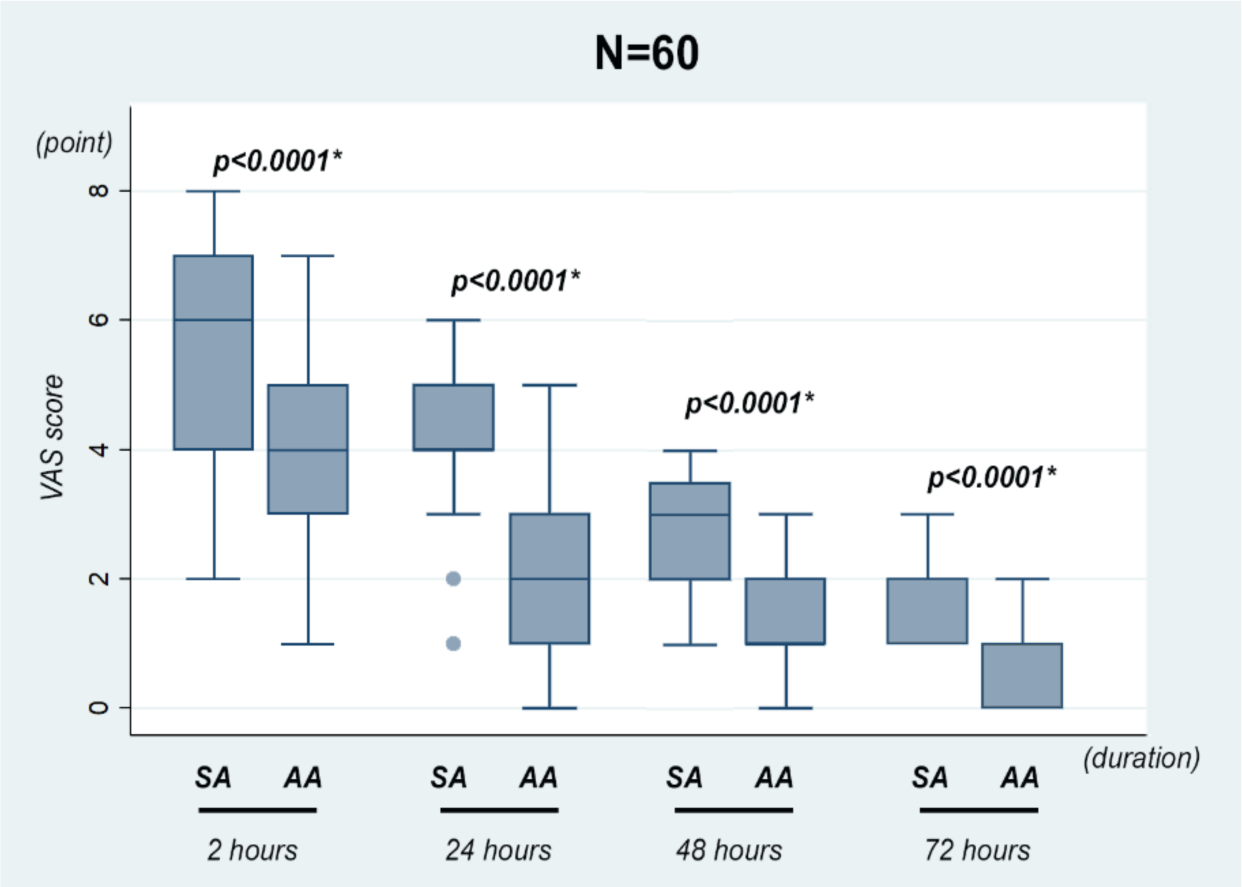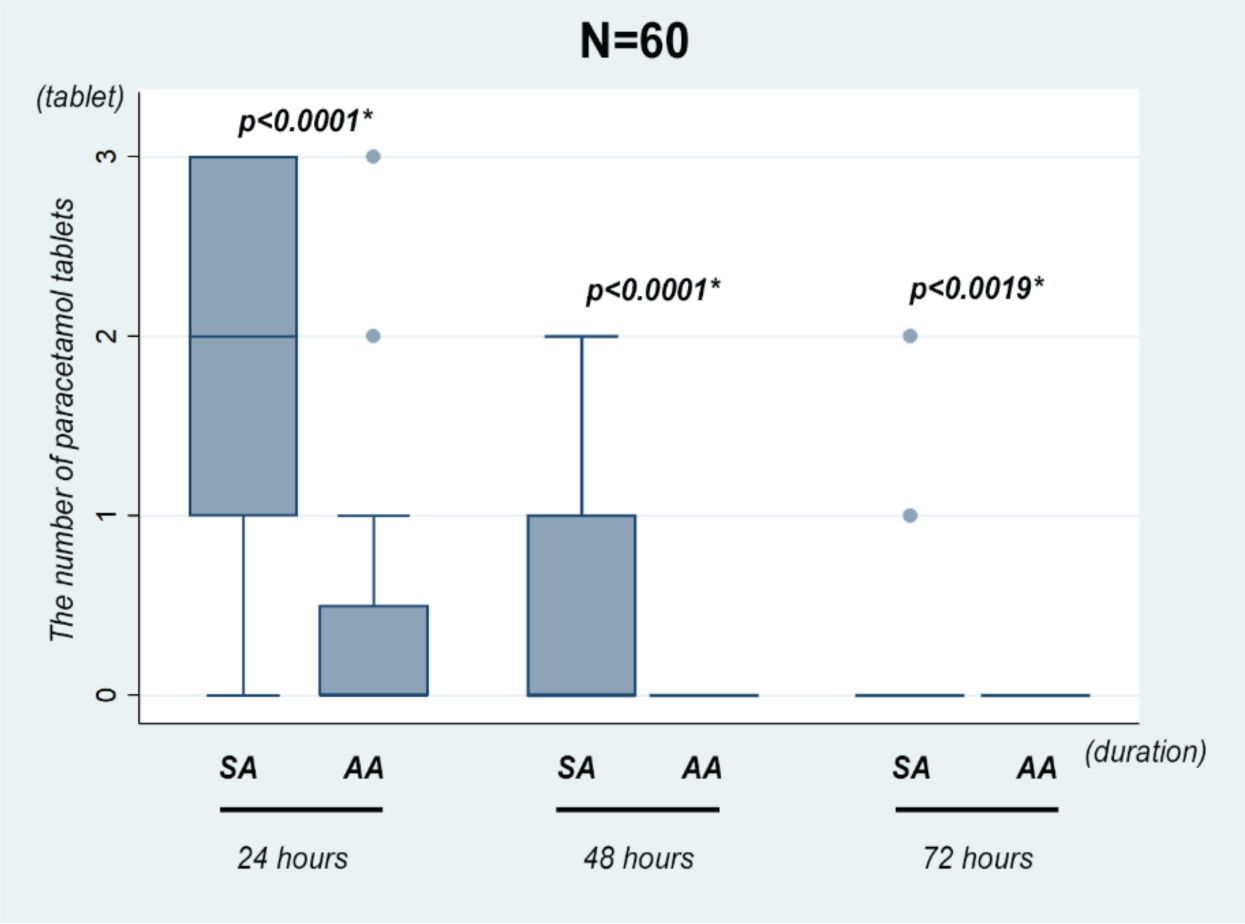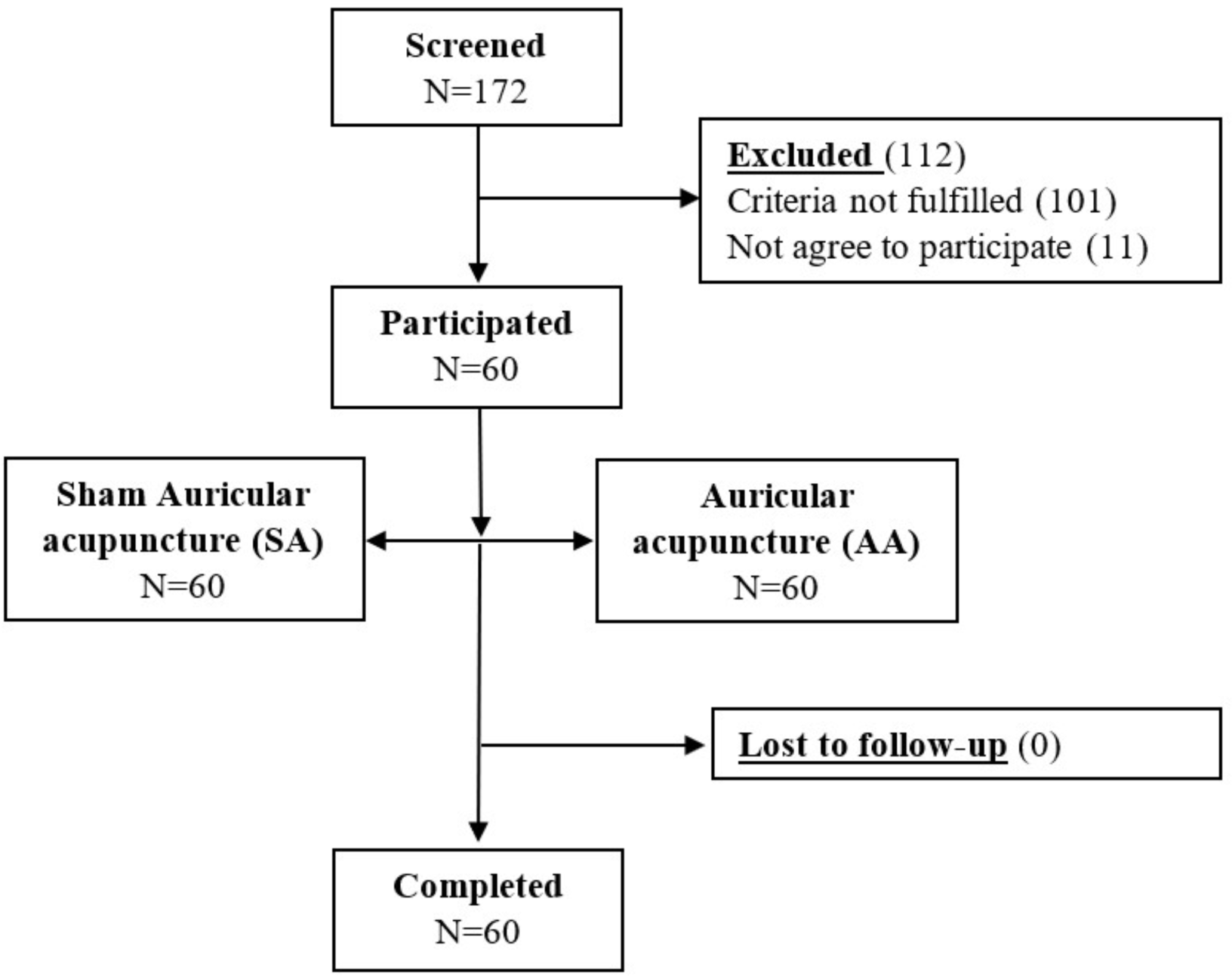1. INTRODUCTION
Wisdom teeth are commonly found in the majority of adults, and they tend to become visible around the ages of 18 to 24, though this can vary. In cases where the third molars do not develop fully and do not function as regular teeth, they are referred to as impacted wisdom teeth [1]. Many studies have shown that wisdom tooth extraction surgery is the most optimal method for treating wisdom teeth that are growing inward, even without pain symptoms [1, 2]. Therefore, tooth extraction is one of the most common surgical methods in dentistry [3]. After wisdom tooth extraction surgery, swelling and pain are the most common symptoms that affect the patient’s quality of life [4]. Clinicians often prescribe analgesics and non-steroidal anti-inflammatory drugs to alleviate pain in postoperative patients [5]. However, recent studies have shown the undesirable effects of these drugs, as some patients are unable to use them [6, 7]. Among the various forms of acupuncture, auricular acupuncture is commonly used to control pain for various causes and regions [8, 9, 10]. For the maxillofacial region, auricular acupuncture has also been shown to relieve pain in several studies [11, 12, 13]. This research aims to use acupuncture to relieve pain after surgical extraction of mandibular third molar.
The World Health Organization’s acupuncture map includes two points that are specifically listed as having functional effects on the maxillofacial region: the Tooth and Jaw points [14]. Referring to additional research worldwide, it can be seen that the Shen Men point, Sympathetic point, and Adrenal gland point on the pinna are commonly used in many diseases due to their effect on the autonomic nervous system [5, 15, 16, 17, 18, 19]. Therefore, this research has selected a formula of acupoints that includes the Shen Men, Sympathetic, Tooth, Jaw, and Adrenal gland points.
2. MATERIALS AND METHOD
This study was conducted at the Dental Clinic, University of Medicine and Pharmacy at Ho Chi Minh city from March 2022 to March 2023.
Study design: This was a split-mouth design double-blinded clinical trial.
Participants criteria included: Patients who have an indication for surgical extraction of mandibular third molar and are 18 years or older, still have enough wisdom teeth in the lower jaw on both sides, and their skin on the pinna is not infected or ulcerated. Both madibular third molars have the same Winter and the Pell and Gregory classifications.
Participant’s elimination criteria: Patients with contraindications to any of the drugs used in the study (amoxicillin, paracetamol, ibuprofen), have undergone radiation therapy to the head, face, and neck or have a systemic infection. Additionally, patients who are taking other pain relievers and anti-inflammatory drugs or having anxiety, fear of needles, a history of needle shock, pregnant or lactating females were excluded.
Criteria to stop research: Participants who do not consent to continue participating in the study at any stage of the study or occurrence of unpleasant symptoms for the patient with onset at any stage during the study, such as nausea, dizziness, dyspnea, and sweating. Patients who use pain relievers other than those used in the study.
To calculate the sample size for comparing two averages, we used this formula.
With a type-1 error of 0.05 and a type-2 error of 0.1, based on the research results of Chiu WK et al. [20], the VAS score at 24 hours after surgery in their study was 2.97 ± 2.8. The study expects the VAS score at 24 hours in the intervention group to decrease by 50% compared to the control group. After calculating and accounting for a potential 5% loss of data, a total of 60 patients were selected as the sample.
This study was conducted in several steps.
In step 1, a Doctor of Odonto-Stomatology conducted clinical examinations, paraclinical examinations, and determined the indication for wisdom tooth surgery. The classification of wisdom teeth was also performed based on the Pell-Gregory and Winter classification.
In step 2, the research team selected patients who met the selection criteria and excluded those who did not. The patients were then informed about the study and asked to sign a consent form. The research team also created a research profile for each patient.
In step 3, the wisdom tooth extraction surgery was performed by the Doctor of Odonto-Stomatology.
Step 4 involved providing all patients with the same postoperative instructions and medication, which included amoxicillin 500mg (15 tablets) to be taken 3 times a day for 5 days, ibuprofen 400mg (9 tablets) to be taken 3 times a day for 3 days, and paracetamol 500mg (9 tablets) to be taken 1 tablet at a time, with 1 more tablet to be taken each time the VAS pain score was ≥ 3, not to exceed 6 tablets/day. Oral hygiene instructions were also given.
In step 5, auricular or sham auricular acupuncture was conducted on the same side of the tooth extraction right after the postoperative instructions. Participants who met the criteria for the study were assigned randomly in a 1:1 ratio to receive either auricular acupuncture (AA) or sham auricular acupuncture (SA). The randomization process used block randomization with a block size of six that was generated using SAS software version 9.4. The codes for randomization were kept in envelopes with ordered numbers. Eligible patients were assigned to either AA or SA based on the sequential order of their recruitment. The VAS pain score was recorded after 2 hours, 24 hours, 48 hours, and 72 hours, as well as the number of painkillers used after 24 hours, 48 hours, and 72 hours.
Step 6 involved making an appointment for the patient to come back one month later for wisdom tooth extraction on the opposite side, and repeating the same steps as in steps 3 and 4.
In step 7, auricular or sham auricular acupuncture was conducted on the same side of the tooth extraction right after the postoperative instructions. The VAS pain score was recorded after 2 hours, 24 hours, 48 hours, and 72 hours, as well as the number of paracetamol 500mg used after 24 hours, 48 hours, and 72 hours.
Finally, in step 8, data analysis was performed.
Outcome assessors and data analysts were blinded to the treatment group allocation. The acupuncturist was not involved in the outcome assessments or data analyses. The patients were blinded to the treatment they received.
Auricular acupuncture: The acupuncturist used 5 needles per patient (0.06 - 0.5mm diameter, 1.3-3.0mm length) for auricular acupuncture (AA) and five pieces of tape instead of needles for sham AA.

The acupuncturist has a medical doctor’s license and has been trained in acupuncture. Acupuncture was done at including Shenmen (TF4), Sympathetic point (AH6a), Adrenal gland points (TG2), Jaw (LO3), and Tooth (LO1). The location of acupoints was determined according to the World Federation of Acupuncture and Moxibustion Societies - WHO Regional Office for the Western Pacific in 2013 [14].
The postoperative analgesic effect were measured by the VAS pain and the number of paracetamol 500mg. A visual analog scale (VAS) includes a 10 cm long line with verbal labels located at each end. The label on the far left end reads “no pain” while the one on the far right end reads “the most severe pain imaginable”. The patient is required to indicate the intensity of their pain by marking a point on the line [21].
For categorical variables, the difference between two groups will be tested using the chi-square test or Fisher’s test if any expected cell count is less than 5. Meanwhile, for continuous variables, Student’s t-test will be used when the data from two groups are normally distributed, and Mann-Whitney test for non-normally distributed data. The analysis was performed using STATA 14.0 software. The significant was set as p<0.05.
3. RESULTS
Recruitment for the study began on March 2022 and ended on March 2023 when the target number of participants was reached. Of the 172 patients approached, 101 did not meet the inclusion criteria or met the exclusion criteria, and 11 patients declined to participate. Ultimately, the study enrolled 60 participants. All of them persisted with the study until its completion. The sample selection process is illustrated in Figure 2.
The characteristics of the demographic profile of participants are presented in Table 1.
Females account for 66.67%, while males only account for 33.33%. 1A and 2A are two common classifications of wisdom teeth.
The features of the wisdom tooth extraction surgery of the participants are presented in Table 2.
The difference between the two time was not statistically significant, with p>0.05.
The results of the changes in the VAS score after intervention at the time points of 2 hours, 24 hours, 48 hours, and 72 hours after completion are shown in Figure 3.

Following the intervention, both time showed a decrease in VAS scores over time. At all time points, the AA time had statistically significantly lower VAS scores than the SA time, with a p-value of less than 0.0001. Specifically, 2 hours after the intervention, the SA time had a VAS score of 6 (4-7), while the AA time had a score of 4 (3-5). Similarly, 24 hours after the intervention, the scores were 4 (4-5) and 2 (1-3) respectively; at 48 hours after the intervention, the scores were 3 (3-3.5) and 1 (1-2) respectively; and at 72 hours after the intervention, the scores were 2 (1-2) and 1 (0-1) respectively.
The amount of paracetamol used 24 hours, 48 hours, and 72 hours after the intervention are shown in Figure 4.

The quantity of paracetamol 500mg/tablet used after intervention in both time decreased over time and by day 3, most in both time did not use any more paracetamol. At all-time points, the amount of paracetamol used in the AA group was lower than the SA group, which was statistically significant. Specifically, within the first 24 hours after the intervention, the Sham Auricular acupuncture group used 2 (1-3) tablets, while the Auricular acupuncture group used 0 (0-0.5) tablets, p < 0.0001. Notably, from 24 hours to 48 hours and 72 hours after the intervention, the AA group did not use any more doses of paracetamol, while the SA group used 0 (0-1) and 0 (0-0) tablets (with 2 cases using 1-2 tablets), with p values of <0.0001 and 0.0019, respectively.
4. DISCUSSION
The topic of exploring different acupuncture methods in pain management in general and in managing facial pain specifically is considered no longer unfamiliar and it seems that these results support the effectiveness of acupuncture in reducing pain [8, 10]. Studies on acupuncture have received much attention in the role of controlling facial pain. The earliest studies, Simmons’ (1993) study particularly, have showed that acupuncture significantly increased the pain threshold in the facial area compared to the control group, and this study also indicated that the pain reduction mechanism may involve an increase in endogenous opioids [11]. Our previous study also showed a relationship between the Jaw point and the lower jaw area through increased temperature expression during acupuncture [22]. Clinical intervention studies have also been conducted, with acupuncture being evaluated as the optimal therapy for pain relief in patients with temporomandibular joint disorders compared to the sham acupuncture group, with a splint [7, 17, 23]. In addition, comparisons with nerve pain medication and moxibustion therapy also show that acupuncture is more effective in treating facial pain [24], and moxibustion is more effective when combined with acupuncture in treating trigeminal neuralgia [25]. Overall, it seems to show a general tendency in acupuncture studies for facial pain management with good effectiveness.
Our study also evaluated the effectiveness of acupuncture in controlling pain in the facial region, specifically after lower wisdom tooth extraction. Lower wisdom teeth often cause many troubles for patients. Surgical removal of lower wisdom teeth seems to be becoming more popular, and postoperative pain is one of the main complaints of patients [1, 2, 4, 5, 26]. Our study showed that acupuncture is effective in reducing postoperative pain after lower wisdom tooth extraction by improving the VAS score during the follow-up period after surgery. Specifically, in the time receiving acupuncture combined with standard treatment, the VAS score after surgery ranged from 4 points (moderate pain) to 1 point (mild pain), corresponding to 2 hours and 3 days after surgery, respectively. When compared to the standard treatment method of using ibuprofen alone, the combination with acupuncture showed superior efficacy immediately after 2 hours postoperatively, which is also considered the time when the anesthetic effect wears off. The AA time only experienced moderate pain, while the other time experienced severe pain. This result was also observed similarly in the follow-up period afterward, with a difference of approximately 2 points in the VAS score between the two times. The pain relief efficacy was also reflected in the amount of 500mg paracetamol tablets being used. The acupuncture group used fewer paracetamol tablets than the group without acupuncture at every follow-up time. Patients in the AA time seemed not to need additional paracetamol for pain relief.
Pain is a subjective experience for each individual [27]. A split-mouth study design helps eliminate much of this variability by assessing pain in the same subject. Factors that may affect pain after surgery include difficulty of the procedure, amount of anesthesia used, duration of a surgery, surgical performers and instruments as well as specified technique, and experience of the surgeons [28, 29]. We controlled for these by randomization to achieve an even distribution across the two interventions, as well as having only two surgeons participate in the surgical process with the same technique and instruments. Additionally, we blinded participants by using a placebo and only selecting subjects who had never experienced a placebo effect in an attempt to eliminate the placebo effect. These steps helped increase the reliability of the results obtained.
The study with the topic of acupuncture for increasing pain threshold or reducing pain in facial disorders is common [9]. However, research on the effectiveness of acupuncture in reducing pain after wisdom teeth extraction is still rare. There are many techniques that can be used to stimulate acupuncture points, including using needles, auricular seeds, moxibustion, injection, laser, etc. [30].
A study by Sampaio-Filho (2018) used low-energy laser irradiation to impact on acupuncture points in patients after lower wisdom teeth extraction [13]. The results showed that low-intensity laser irradiation on acupuncture points did not reduce pain after lower wisdom teeth extraction. Our study design is quite similar to Sampaio-Filho’s. The design of Sampaio-Filho’s study was also a split-mouth study; however, this study used a different set of acupuncture points than ours. Specifically, Sampaio-Filho used acupuncture points including Shenmen, Sympathetic, Jaw, Adrenal gland, Stomach, and Toothache points, while our study used acupuncture points including Shenmen, Sympathetic, Jaw, Adrenal gland, and Tooth points. Thus, compared to Sampaio-Filho’s study, our study did not use Stomach and Toothache points, but used Tooth point instead.
In addition, the treatment methods also differed. In Sampaio-Filho’s study, low-energy laser irradiation was used without the combination of ibuprofen, while in our study, auricular acupuncture was performed along with using of ibuprofen as regularly prescribed for pain relief [13]. Therefore, we believe that the use of auricular acupuncture may be more effective than using low-energy laser irradiation, and the point selection formula may need to include the Tooth acupuncture point to achieve treatment effectiveness. Alternatively, the difference may be due to differences in sample characteristics between each study. These hypotheses are still uncertain due to a lack of evidence on auricular acupuncture studies for pain relief after wisdom teeth extraction.
Limitations
Although our results are quite good, our research still has some limitations. Our placebo method was quite simple by using a non-needle adhesive patch as sham acupuncture. We chose participants who had never experienced acupuncture before so they did not know what the feeling of acupuncture was like. However, both experimental and sham acupuncture were performed on the same subject at two different times. Therefore, when compared between the two times getting through intervention process, the participants may be able to distinguish between the two sensations. Our study did not evaluate the success of the placebo acupuncture, so there is a risk that the placebo effect was not completely eliminated. Although having two surgeons in the study limited the difference in experience and skill, there is still some variability that exists. However, by randomizing the order of experimental and sham acupuncture, we believe that the bias was minimized.
Conclusion
AA was found to be effective in alleviating pain following mandibular third molar surgery and reducing the amount of paracetamol tablets required. AA holds promise as an effective, minimally invasive, and user-friendly pain management approach following lower third molar surgery with few side effects. The application of AA may be expanded to other orofacial pain conditions.









